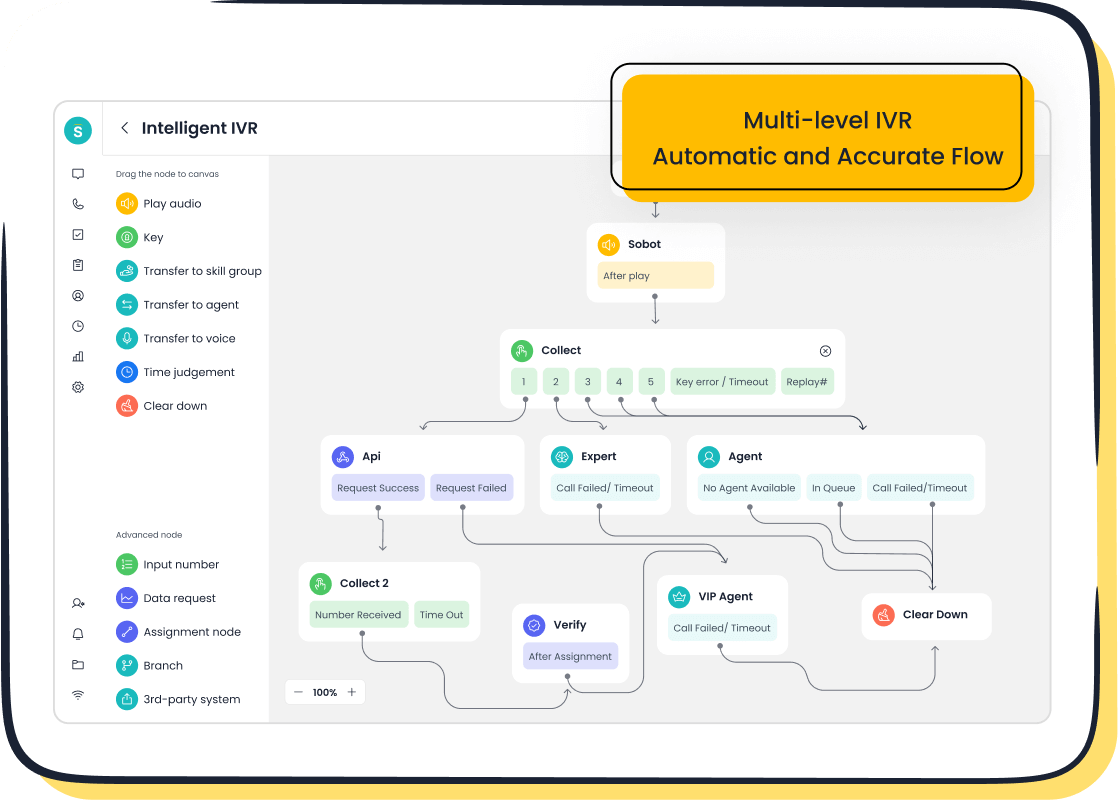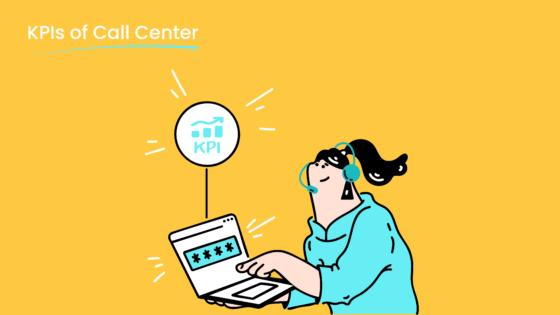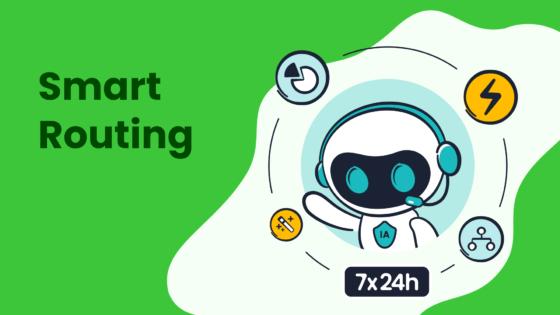Which Improves Customer Experience More ACD or IVR

ACD call distribution often delivers a better customer experience when customers want fast help from live agents. IVR works well for customers who prefer self-service options or need quick answers to simple questions. Sobot uses both systems in its Sobot call center to meet different needs. Sobot AI helps customers reach the right agent or solve problems quickly. For example, Sobot improved customer experience for Weee! by reducing wait times and raising satisfaction scores. Customers notice results like these and value the improvements.
ACD and IVR Basics

What Is ACD
Automatic Call Distribution (ACD) is a core technology in modern call center acd environments. It helps businesses manage large volumes of calls by directing each call to the most suitable agent or team. ACD solutions use advanced logic to match callers with agents who have the right skills or knowledge. This process improves customer satisfaction and reduces wait times.
Many call center acd platforms, such as Sobot, offer acd solutions that support omnichannel routing. This means they can handle not only voice calls but also emails, chats, and SMS in one system. Key acd solutions features include:
- Skills-based routing to connect customers with the best agent for their needs
- Omnichannel support for voice and digital contacts through a universal queue
- Integration with CRM systems for better customer data access
- Real-time monitoring and reporting tools for supervisors
- Multiple call distribution methods, such as linear, circular, and weighted routing
- Automatic callback options for busy times
Sobot’s call center acd system also includes AI-powered enhancements, like predictive routing and chatbots, to further improve the customer experience. These acd solutions help businesses reduce wait times and increase first-call resolution rates.
What Is IVR
Interactive Voice Response (IVR) systems allow callers to interact with a phone menu using voice commands or keypad input. IVR solutions guide callers through options, such as checking account balances or getting store hours, without needing to speak to a live agent. This self-service approach saves time for both customers and agents.
IVR systems come with many ivr features that make them powerful tools for call centers. Some common ivr solutions capabilities include:
- Multi-level menus for structured call routing
- Voice recognition and DTMF input for flexible caller interaction
- Integration with CRM systems for personalized greetings and service
- Automated callbacks so customers do not have to wait on hold
| IVR Feature | Description |
|---|---|
| Custom Greetings | Personalized messages for each caller |
| Call Flow Design | Drag-and-drop tools to build and edit call paths |
| Call Routing | Directs calls based on skills, language, or priority |
| Call Queueing | Provides estimated wait times and real-time updates |
| Outbound IVR | Sends automated reminders, surveys, or alerts |
Sobot’s ivr solutions offer easy menu building and real-time updates, making it simple for businesses to adapt to changing needs. IVR systems help lower average handle time and improve first call resolution, which leads to higher customer satisfaction.
Customer Experience Impact

Speed and Resolution
Speed matters in every customer interaction. Customers expect quick answers and fast solutions when they contact customer service. Both ACD and IVR systems help reduce wait times and improve first call resolution. ACD systems use smart rules to send calls to the right agent. This means customers spend less time waiting and get help from someone who can solve their problem. IVR systems guide callers through menus, letting them choose options or get answers without waiting for an agent.
- ACD automatically distributes calls based on agent skill, availability, or customer history. This reduces wait times and improves first call resolution.
- IVR systems offer 24/7 self-service, letting customers solve simple issues any time. This reduces the need for live agents and speeds up resolution.
- Automation in both systems directs customers to the right place, reducing repeat calls and boosting customer retention.
Research shows that ACD systems usually connect customers to live agents faster than IVR alone. IVR can add extra steps before reaching an agent, which may increase response time if the menu is too long or confusing. However, when IVR is well-designed, it helps filter and direct calls efficiently. Sobot’s Voice/Call Center combines both systems, using intelligent IVR to collect information and ACD to route calls quickly. This approach lowers average handling time and improves customer experience.
Tip: Companies that use both ACD and IVR together see higher customer satisfaction and better customer retention. They also report lower average handling time and fewer abandoned calls.
Personalization
Personalization makes every customer interaction feel special. ACD and IVR systems both support personalized service, but they do it in different ways. ACD uses customer data, such as caller ID or past interactions, to match customers with the best agent. This ensures that customers talk to someone who understands their needs. IVR systems can greet customers by name and offer menu options based on their history.
Case studies show that integrating ACD with CRM systems allows agents to see customer information in real time. This helps agents solve problems faster and provide tailored solutions. For example, in healthcare and real estate, intelligent call routing reduced wait times by 30% and increased lead conversions by 25%. Sobot’s unified workspace gives agents access to customer profiles and past tickets, making it easier to deliver personalized service.
AI-powered IVR, like the one in Sobot’s platform, uses natural language processing to understand what customers want. It can offer proactive suggestions or route calls based on intent. This level of personalization improves customer experience and increases customer retention. Analytics tools in these systems also help managers spot trends and improve service quality over time.
Note: Personalized service leads to higher customer satisfaction and loyalty. Customers are more likely to return when they feel understood and valued.
Self-Service
Self-service is now a top priority for many customers. IVR systems make self-service possible by letting customers check balances, track orders, or get information without speaking to an agent. Studies show that 81% of customers prefer to try self-service before talking to a live agent. For simple issues, 61% of customers choose self-service options. This trend shows that IVR plays a big role in modern customer service.
However, not all customers like IVR menus. If the menu is too long or confusing, customers may get frustrated. Surveys report that 61% of clients dislike IVR systems with poor design. The best results come from combining IVR with ACD. IVR handles routine questions, while ACD sends complex issues to skilled agents. This balance keeps customers happy and improves customer experience.
Sobot’s Voice/Call Center lets businesses build flexible IVR menus with a drag-and-drop interface. Companies can update menus in real time and offer multilingual support. This helps customers find answers quickly, no matter where they are. Sobot’s system also supports callbacks and estimated wait times, which manage expectations and reduce frustration.
| Self-Service Benefits | Description |
|---|---|
| 24/7 Availability | Customers get help any time, even outside business hours. |
| Lower Costs | Fewer agents needed for routine questions. |
| Faster Resolution | Simple issues solved without waiting for an agent. |
| Improved Satisfaction | Customers feel empowered and in control. |
Block Quote: “Self-service options improve customer experience by reducing wait times and letting customers solve problems on their own terms.”
acd call distribution in Contact Centers

Sobot Voice/Call Center Routing
acd call distribution plays a vital role in every modern call center. Sobot’s Voice/Call Center platform uses advanced acd solutions to manage calls efficiently. The system supports several call routing strategies to match customers with the right agents. These strategies include:
- Round-robin distribution, which balances calls evenly among agents.
- Skills-based routing, which sends calls to agents with the right expertise.
- Priority-based call distribution, which ensures urgent calls reach qualified agents first.
- Fixed order routing, where calls follow a set sequence among agents.
- Idle time-based routing, which directs calls to agents who have waited the longest.
- Availability-based routing, which considers agent schedules and time zones.
- Simultaneous routing, where all available agents receive the call, and the first to answer takes it.
- Weighted routing, which assigns calls based on agent workload or experience.
Sobot’s acd solutions allow businesses to customize call routing for their unique needs. The platform’s automated call distribution adapts to real-time changes in call volume. This flexibility helps companies handle peak times and unexpected surges without losing efficiency. Sobot also integrates with CRM systems, so agents see customer data as soon as calls arrive. This integration improves both call queue management and customer satisfaction.
Tip: Using multiple call routing methods together can boost agent productivity and reduce customer wait times.
Agent Connection
acd call distribution directly affects how quickly agents connect with customers. Sobot’s acd solutions use intelligent algorithms to match calls with the best available agents. Research shows that advanced automated call distribution can improve first-contact resolution rates by up to 35%. Sobot’s system combines acd solutions with real-time analytics and workforce management tools. This combination helps managers adjust staffing based on call patterns and agent availability.
When Sobot’s acd solutions work with IVR, the system pre-screens calls and passes important details to agents. This process reduces hold times and speeds up call resolution. Studies have found that integrating acd solutions with IVR can increase customer satisfaction scores by 20-30%. Sobot’s call center platform also supports call queue management, so customers spend less time waiting and more time getting help.
Sobot’s acd solutions help agents handle more calls with less stress. The system balances workloads, reduces idle time, and ensures that every customer connects with the right agent quickly. This approach leads to higher efficiency, better service, and happier customers.
call distribution methods Compared
IVR Menus
IVR menus play a big role in how calls move through a contact center. These menus let callers use their phone keypad or voice to pick options. Good IVR menu design helps customers find answers fast. Industry experts say the best IVR menus limit main choices to four or five. They put the most common requests first, so callers do not waste time. A pyramid structure works well, starting with broad topics and narrowing down to specific needs.
Tip: Clear menu options and easy navigation, like “go back” or “main menu,” help callers avoid frustration.
Many companies use shortcuts for experienced callers. For example, pressing “0” lets someone reach an agent right away. This keeps satisfaction high, since callers who cannot reach a person often feel unhappy. IVR menus should also handle errors gently, offering clear messages and other paths if a caller gets stuck.
Personalization makes IVR even better. When IVR connects with CRM systems, it can greet callers by name or suggest options based on past calls. This can cut handle times by up to 40% and boost satisfaction. Sobot’s Voice/Call Center lets businesses build and update IVR menus easily, supporting multiple languages and real-time changes. Companies can track IVR performance using data like completion rates and customer feedback to keep improving the experience.
ACD Logic
ACD logic stands at the heart of smart call routing. Unlike IVR, which guides callers through menus, ACD systems decide which agent should answer each call. Industry analysts explain that ACD uses many call distribution methods, such as skills-based, fixed, or simultaneous routing. These methods help match calls to the best agent, using factors like skills, language, and availability.
| Call Distribution Method | Description | Pros | Cons |
|---|---|---|---|
| Fixed Routing | Calls routed to agents in a set order. | Simple setup. | Not flexible, may lower first-contact resolution. |
| Simultaneous Routing | All available agents get the call at once. | Fast response. | May cause call bouncing or wrong agent answering. |
| Routing Based on Average Talk Time | Uses agent availability and past call data. | Balances workload. | May not match caller needs perfectly. |
| Skills-Based Routing | Matches calls to agents with the right skills or language. | Higher satisfaction, better resolution. | Longer waits if skilled agents are busy. |
Modern ACD logic uses AI and real-time data to improve call routing. AI can look at caller history, mood, and agent skills to send calls to the best person. This reduces average call handling time by about 35% and helps agents solve more issues each hour. Sobot’s Cloud Call Center uses these advanced features, offering omnichannel support and real-time analytics. The system can handle calls, chats, and emails together, making sure every customer gets the right help quickly.
Note: Companies that use AI-powered call routing see higher customer satisfaction and better agent productivity.
Sobot Solutions and Use Cases
Weee! Customer Story
Weee!, a leading online Asian supermarket in America, faced challenges with its customer service. The company needed to support many customers from different backgrounds and time zones. Sobot’s Voice/Call Center helped Weee! solve these problems. The flexible IVR system allowed customers to choose their language and get help quickly. Agents used a unified workspace to see all customer information in one place. This made it easier to answer questions and solve issues.
After using Sobot, Weee! saw big improvements. Agent efficiency increased by 20%. Resolution times dropped by 50%. The customer satisfaction score reached 96%. Customers found answers faster, and agents handled more calls with less stress. Sobot’s system also supported integration with Weee!’s ticketing system, making the whole process smoother.
“Sobot’s flexible IVR and unified workspace helped Weee! deliver better customer experience and faster service.”
Industry Applications
Sobot’s Voice/Call Center brings benefits to many industries. The platform connects customers across voice, social media, e-commerce, and more. Agents can handle calls, chats, and emails in one system. This saves time and reduces errors.
| Industry | Application of Sobot’s ACD and IVR Solutions | Impact on Agent Efficiency and Customer Outcomes |
|---|---|---|
| Retail | Streamlines customer inquiries and automates responses | Reduces agent workload, boosts customer satisfaction and conversion rates |
| Financial Services | Improves customer experience and secure data handling | Enhances agent focus on complex tasks, improving service quality |
| Gaming | Supports player conversion and collaboration | Increases agent productivity and customer engagement |
| Education | Automates customer conversion and retention | Reduces repetitive tasks for agents, improving retention efforts |
| Enterprise Services | Streamlines problem-solving with rule-based routing | Speeds up issue resolution, reducing agent handling time |
| Life Services | Automates pre-sales and after-sales service | Frees agents for higher-value interactions, improving service quality |
Sobot’s platform uses AI to route calls and automate tasks. This reduces agent workload by 60% and improves Net Promoter Score by 35%. Customers get faster answers, and agents can focus on complex issues. The system’s quick deployment and easy integration help businesses start improving customer service right away.
Choosing the Right System
Assessing Needs
Every organization has unique goals for customer experience. Choosing between ACD and IVR solutions depends on several factors. Decision-makers should look at call volume, the complexity of customer questions, and the need for self-service. The table below shows how each system fits different needs:
| Criteria | IVR Suitability | ACD Suitability |
|---|---|---|
| Call Volume | Handles high call volumes efficiently with self-service options | Suitable for managing large volumes by routing calls to appropriate agents |
| Call Routing | Routes calls based on caller input through menus | Routes calls based on agent skills, availability, and predefined rules |
| Cost Considerations | Cost-effective for businesses needing to reduce staffing | May be more expensive; scalable solutions suitable for larger or growing call centers |
| Scalability | Can handle large call volumes without additional agents | Scalable to support future expansion and remote/global teams |
| Complexity of Interactions | Best for simple, routine inquiries and self-service | Ideal for complex interactions requiring human agents with specific expertise |
| Level of Automation vs. Human Interaction | High automation with self-service options | Focus on human interaction with efficient call distribution |
| Integration Capabilities | Can be integrated with IVR for call redirection | Integrates with CRM and business tools for agent performance monitoring and customer data access |
| Customization Options | Limited customization, mainly menu options | Highly customizable workflows and routing rules, often with drag-and-drop interfaces |
| Monitoring and Coaching | N/A | Supervisors can monitor, coach, and assist agents in real-time |
| Industry and Business Needs | Suitable for businesses prioritizing cost and high-volume self-service | Suitable for businesses needing personalized customer service and agent skill matching |
Organizations should also consider these factors:
- Purpose and functionality of each system
- Integration with CRM or helpdesk software
- Customer experience goals
- Call complexity and agent skill needs
- Analytics and reporting features
Sobot’s omnichannel platform helps businesses assess these needs with real-time analytics and flexible integration options.
Combining ACD and IVR
Many companies find the best results by combining ACD and IVR solutions. IVR solutions act as the first point of contact, letting customers choose options or solve simple issues. When a customer needs more help, ACD routes calls to the right agents based on skills or availability. This teamwork reduces wait times and improves customer experience.
Tip: Keep IVR menus short and clear. Always offer an option to speak with a live agent.
Best practices for integration include:
- Use IVR to collect caller information and direct calls efficiently.
- Let ACD distribute calls to agents with the right skills.
- Ensure a smooth handoff so agents see all customer details.
- Offer multi-lingual IVR menus for diverse customers.
- Notify customers about wait times and provide call-back options.
Sobot’s Voice/Call Center uses these practices. The system supports seamless transitions between IVR and agents, real-time data sharing, and global scalability. This approach leads to higher satisfaction for both customers and agents. Studies show that combining both systems increases first call resolution and reduces unnecessary transfers. Companies using this strategy often see improved customer service and stronger customer loyalty.
Both ACD and IVR systems improve customer experience in different ways. ACD reduces wait times and connects callers to the right agent, while IVR offers self-service for routine tasks. Research shows that combining these systems leads to faster resolutions and higher satisfaction. Sobot’s Voice/Call Center uses advanced ACD and IVR integration, real-time analytics, and AI-powered routing. Decision-makers should define clear goals, choose scalable solutions, and unify data for the best results. For most businesses, integrating ACD and IVR—like Sobot does—delivers the strongest customer experience.
FAQ
What is the main difference between ACD and IVR?
ACD (Automatic Call Distribution) sends calls to the best agent based on skills or availability. IVR (Interactive Voice Response) lets callers use menus to solve simple issues or reach the right department. Both improve call distribution and customer experience in contact centers.
How does Sobot’s call distribution improve customer satisfaction?
Sobot’s call distribution uses ACD and IVR together. The system routes calls quickly, reduces wait times, and connects customers to skilled agents. For example, Weee! improved agent efficiency by 20% and cut resolution time by 50% using Sobot’s Voice/Call Center.
Can IVR systems handle multiple languages?
Yes, modern IVR systems like Sobot’s support multiple languages. This feature helps businesses serve diverse customers. Sobot’s IVR menus can switch languages based on caller input, making call distribution more effective for global companies.
Why do contact centers combine ACD and IVR?
Contact centers combine ACD and IVR to balance self-service and live support. IVR handles routine questions, while ACD routes complex issues to agents. This approach improves call distribution, speeds up resolutions, and increases customer satisfaction.
What industries benefit most from advanced call distribution?
Industries like retail, finance, gaming, and education benefit from advanced call distribution. Sobot’s solutions help these sectors manage high call volumes, automate routine tasks, and deliver personalized service. This leads to higher Net Promoter Scores and better customer retention.
See Also
Best Interactive Voice Response Solutions Reviewed And Ranked
Leading Ten IVR Software Platforms To Watch In 2024
Ways Artificial Intelligence Enhances Customer Service Productivity
Artificial Intelligence Agents Transform Customer Support Experience
